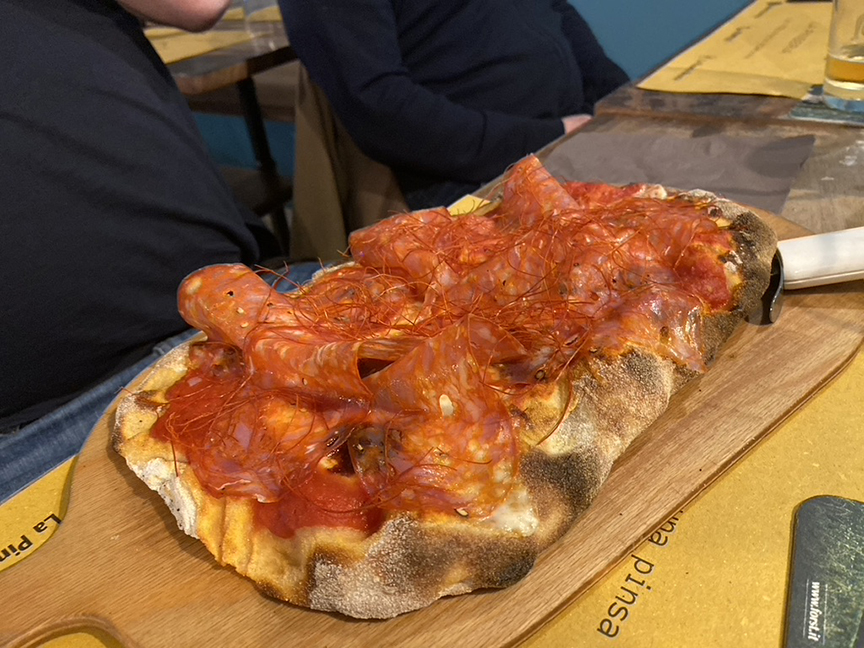 No one knows for certain where the word pinsa came from. It is believed that it is a inflection of pinza or pinzo meaning extremely full.
No one knows for certain where the word pinsa came from. It is believed that it is a inflection of pinza or pinzo meaning extremely full.
What is known for certain is that this Italian neologism first began to appear around 2008 in Rome. By the late 2010s, it was a well-established lemma in the Italian language.
I had seen pinserie in Italy’s capital (pinserie, pin-ze-REE-eh, plural of pinseria, pin-ze-REE-ah, a place where pinse are made). But I was surprised when I returned recently to my beloved Brescia in Lombardy in the north to discover that there is now a popular pinseria there.
It would seem the pinsa is here to stay!
 By seemingly every definition, a pinsa is neither a pizza or a focaccia (even if those words are nearly seamlessly interchangeable in Italy depending on where you are and what you are eating).
By seemingly every definition, a pinsa is neither a pizza or a focaccia (even if those words are nearly seamlessly interchangeable in Italy depending on where you are and what you are eating).
But the concept is the same: high-quality flour pies fired in a convex oven, sometimes with toppings already added, other times with toppings added after the pie is churned out.
The etymon pinzo is suspected because the toppings of a pinsa or pizza or focaccia can be considered a “filling,” the way a pastry or a calzone is “stuffed.”
 The pinse at the Pinseria in Brescia were excellent.
The pinse at the Pinseria in Brescia were excellent.
I also really loved their jalapeño poppers. Yes, you read that right. Italians are WAY into what they call “jalapeño poppers,” even though they don’t use jalapeños but rather a red Italian-grown pepper.
The concept is the same as for jalapeño poppers in the U.S., except here they use high-quality ingredients (instead of Sysco).
The jalapeño poppers at the Pinseria were great and so were all the Roman street food apps. The beer list was great, too.
Move over, pizza! I hope you’ll recover from your pinsa envy!

Pinsa appeared before 2008. My eldest daughter was born that year and I remember going to this place in Monteverde in Rome whose main dish was pinsa way before then.
It most definitely appeared before then. But one of the earliest appearances in “print” (online) dates back to that year.
spit out my wine when I read “Sysco.”